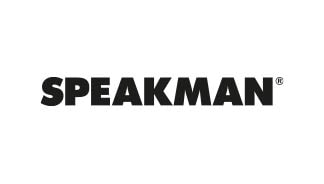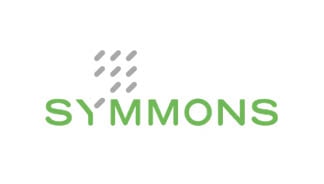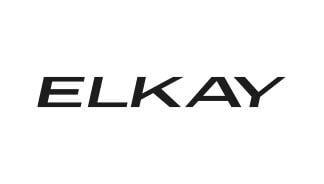Published on
May 2nd, 2022Public Bathrooms in New York City: Upgrades and Repairs to Improve Your Rental Property
If you own a commercial rental property in New York City, chances are it houses common restrooms. Sadly, American washrooms in general and certainly public bathrooms in New York City lag behind their European and Asian counterparts. How can you upgrade public restrooms to improve your property? Here are some top suggestions from the experts at Sanitary Plumbing.
Improve Privacy
Rethink barriers and spacing
The recent pandemic has made everyone look differently at how public bathrooms are configured. While thinking about reducing the spread of germs in the air, we also got a chance to look at privacy overall.
It’s clear American bathrooms offer poor privacy and too much crowding in an effort to be more efficient. However, many people appreciate a more sophisticated washroom, which is something to think about in an upgrade.
Rather than using flimsy barriers that don’t offer much protection from onlookers (and certainly no acoustic privacy), why not offer floor-to-ceiling doors like you find across the Atlantic in European “water closets”? If open urinals must be accommodated in men’s rooms, try spacing them further apart with barriers in between each one. Background music can offer some sound privacy, similar to Japanese toilets, which are growing in popularity worldwide.
Consider single-user bathrooms
Even better, single-user public restrooms are the next step up in privacy. Each bathroom unit contains its own toilet and sink. This has the added benefit of allowing these washrooms to be used by men or women, and they’re safer for kids as well.
The number of bathrooms you provide needs to meet New York City building code requirements, which is based on expected occupancy. You may also need to have separated bathroom facilities for employees, depending on the size and nature of businesses renting from you. At Sanitary Plumbing, we can certainly help you investigate and meet any building code mandates.
Increase Sanitation
Provide hand cleaning on entry
Hand sanitation came sharply into focus with Covid, but cleanliness can also help reduce the spread of other pathogens, like E. coli, and also keep restrooms tidier. Germs come not only from using the toilet but are also present on people’s hands on entry to the bathroom.
Therefore, offering hand cleaning via sinks or hand sanitizer by the door can cut down on common illnesses. This is particularly helpful if your restroom is in a restaurant or other type of commercial food establishment.
Be careful about overreliance on alcohol-based hand sanitizers. While they do kill many pathogens, they don’t eliminate some flora commonly found in the digestive system, like Clostridium difficile. Only good old-fashioned soap and water can remove these germs from the skin.
Reduce “toilet plumes”
When a toilet is flushed, especially forcefully, a plume of water sprays momentarily in the air, which can spread germs, odors, and moisture (which aggravates subsequent users who don’t want a wet floor or toilet seat). There are a few different solutions for this:
- Adjust pressure-assisted flush toilets to reduce force.
- Use toilet seats with lids, where ADA compliant.
- Install automatic toilet seats that close when the toilet is flushed.
- Add waterless urinals and toilets, a technology that’s still being developed for widespread use but definitely will be the wave of the future.
Facilitate cleaning
Cleaning public restrooms can be the bane of every landlord and property manager’s existence. However, there are things you can do to make washroom cleaning easier and more effective:
- Install flooring that provides adequate tractability without catching excess dirt.
- Use curved tiles in corners so dirt and germs don’t collect there.
- Place lined trash cans strategically around the room to accommodate paper towels, personal trash, feminine hygiene products, diapers, etc.
- Eliminate the exit door or make it hands-free (swinging out) to get rid of that pile of towels that always accumulates in that area from people who don’t want to touch the door handle.
- Install hands-free devices (see below).
- Use automatic scent dispensers activated when a toilet flushes.
- Install germ-resistant surfaces wherever possible, from hospital-style countertops to naturally antimicrobial silver or copper fixtures.
Go touchless
As you’ve probably gathered, the less patrons touch things in restrooms, the fewer the opportunities to spread germs. That’s a great reason to introduce touchless technology in your washrooms, which is also highly appreciated by everyone from people carrying parcels and handbags to parents with babies in their arms.
There are multiple places where you can include no-touch features in your public bathrooms:
- Motion-sensor light switches (better for single-use bathrooms due to security issues)
- Touchless towel dispensers and hand dryers
- Hands-free water taps with timed shutoff
- Automatic soap dispensers
- Sensor-activated hand sanitizer dispensers
- Automatic toilet flushers
- Foot pedal-controlled trash receptacles
- Automated self-cleaning toilets
- Touchless stall door opening mechanisms
Bolster Security
Mirrors and stall placement
Unfortunately, public washrooms are often designed and built by men but used more by women. This creates an issue where female security and privacy issues haven’t been taken into account. Ways you can increase safety and discretion include:
- Remove entry door locks for multi-person restrooms (or use no door with a labyrinth entrance, which also improves sanitation).
- Place mirrors so users can see if a potential intruder is hiding in the back of the washroom, without compromising stall privacy.
- Install full-length stall doors, as suggested above, using airplane-style “occupied” or “vacant” signage associated with the door latch.
- Avoid motion sensor lights except with single-user bathrooms.
- Place restrooms in well-trafficked areas with sightlines to public areas.
- Place hooks for handbags, backpacks, etc., in places where others can’t grab and make off with another’s belongings.
- Rather than open ceilings to hear if someone needs help, install pulls or buttons for emergencies.
Manage Other Common Restroom Problems
Miscellaneous improvements
There are a multitude of places where public restrooms irk users, and a bit of forethought can make your bathrooms more comfortable and convenient.
First, consider installing separate exits for multi-person washrooms. This eliminates people leaving the bathroom getting caught in the queue for stalls.
If installing diaper changing stations, provide cleaning supplies for users to employ before the next person comes along. In places where parents and kids often use the restrooms together, you could even consider installing an adult and a children’s toilet in one stall.
Are you making access for the less abled sufficient? Is there adequate width for wheelchairs in the stall? Is getting in and out of the bathrooms easy?
Is toilet paper an issue? Keep supplies well stocked and use oversized rolls when possible. You’ll have to balance the concern between theft and availability. Pro tip: using high dissolvability tissue will greatly reduce toilet clogs.
Think about how people use the washroom in your unique situation. Do you need hooks or holders at the sink so people don’t get purses, briefcases, or other items wet? Do women tend to go to the ladies’ room in pairs, so a chair or settee would be helpful (also nice for nursing moms)? Would offering luxuries such as mints, cologne, and the like be welcomed? Should you hire bathroom attendants?
Are you ready to upgrade your public restrooms and need professional assistance? Call Sanitary Plumbing today at 212-734-5000 or use our online form to schedule a consultation.








